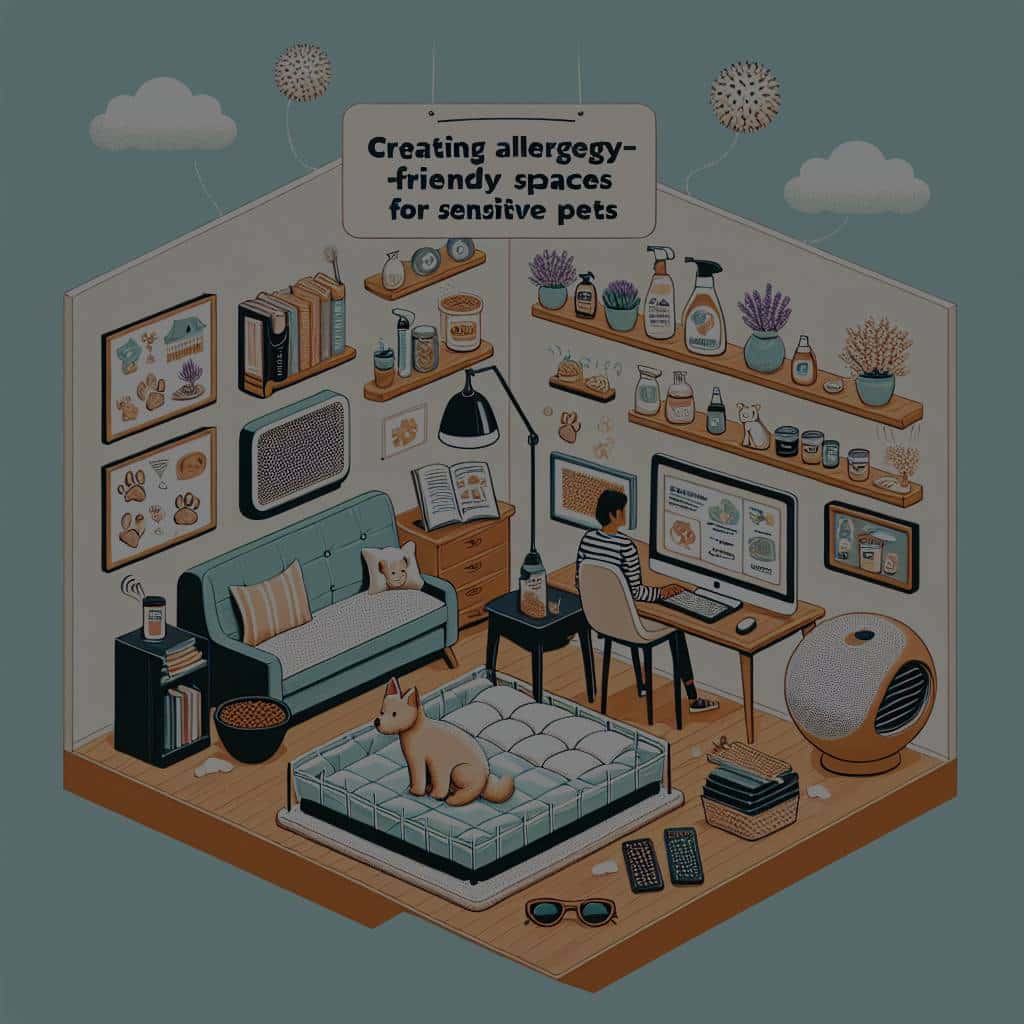How to Create an Allergy-Friendly Space in Your Home for Sensitive Pets?

The love you have for your pets is immeasurable, but so might be the allergens in your home. As pet owners, maintaining a clean, allergy-free space for your pets is crucial to their health and well-being. In this article, we’ll provide you with helpful advice and practical tips to reduce allergens, such as dust, dander, and other common culprits that trigger allergy symptoms in pets.
Understanding Your Pet’s Allergies
Before diving into the steps to create an allergy-friendly space, it’s vital to understand your pet’s allergies. Just like humans, dogs and cats can suffer from different types of allergies. Pet allergies can be due to various allergens found in your home, including dust mites, molds, and particularly pet dander. These allergens can trigger allergic reactions in pets, leading to symptoms such as itching, skin rash, sneezing, and sometimes respiratory issues.
Have you seen this : What Are the Steps to Introduce an Abyssinian Cat to Water Play?
The first step towards creating an allergy-free home for your pets involves recognizing the signs of an allergic reaction. As a pet owner, you should stay vigilant to any changes in your pet’s behavior or physical appearance. Frequent scratching, changes in skin color or texture, and excessive grooming could be indicative of a pet battling allergy symptoms.
Reducing Allergens in the Air
Now that you’re well-versed with pet allergies and their symptoms, let’s move on to the core issue: how can we reduce allergens in our homes? The first place you should direct your cleaning efforts is the air inside your house.
In the same genre : What’s the Ideal Routine for Exercising a High-Energy Border Collie?
Airborne allergens such as dust, pollen, and dander are common in most homes, and they can pose a significant risk to pets with allergies. One of the ways to help your pet breathe easier is by investing in a good-quality air purifier. Air purifiers can be beneficial in reducing the allergens in your home’s air, providing a cleaner and healthier environment for your pets.
Besides using an air purifier, regular cleaning of air vents and ducts will also reduce allergens in the air. Additionally, consider using hypoallergenic filters for your HVAC system, which can further help in trapping airborne allergens.
Keeping Your Home Dust and Dander Free
Dust and pet dander are two of the most common triggers for pet allergies. Therefore, it’s essential to keep your home free from these allergens to prevent triggering your pet’s allergies.
Regular and thorough cleaning is the key to maintaining a dust and dander-free home. Vacuum your home frequently, preferably using a vacuum with a HEPA filter, which is designed to capture tiny particles such as pet dander and dust mites. Don’t forget to clean areas where your pet spends most of their time, such as their sleeping area and favorite lounging spots.
When it comes to pet dander, grooming your pet regularly can help significantly. Brush your pets outside the house to prevent dander from getting in your home’s air. If your pet is particularly prone to producing dander, you might want to consider using dander-reducing pet shampoos and sprays.
Allergy-Proofing Your Pet’s Environment
Another crucial step, when creating an allergy-friendly space, involves making your pet’s environment allergen-free. This would mean making certain adjustments and introducing new rules in your household.
Your pet’s bedding can be a hotbed for allergens. Thus, it’s crucial to wash your pet’s bedding frequently with hypoallergenic laundry detergent. Likewise, if your pet is allowed on the furniture, use washable or easily cleaned furnishings.
If your pet has a favorite spot in the house, try keeping that area as allergen-free as possible. This may involve more frequent cleaning or even removing items that can easily trap allergens.
Controlling Outside Allergens
While most of the allergens affecting your pet are likely to come from inside your home, outside allergens also play a significant role. Therefore, controlling outside allergens is just as crucial.
Limiting your pet’s exposure to allergens outside can help manage their allergy symptoms. This can mean limiting outdoor time during high pollen counts or immediately after mowing the lawn. Also, consider wiping your pet’s paws and fur with a damp cloth after they’ve been outside to remove allergens they might have picked up.
Ultimately, creating an allergy-friendly space for your pets involves a consistent effort to reduce and control allergens in their environment. By following these tips, you’re well on your way to providing a healthier and more comfortable living environment for your beloved furry friends.
Implementing a Proper Pet Hygiene Routine
Having a proper hygiene routine for your pets is significant in reducing allergen levels in your home. This not only includes regular grooming but also involves other practices that minimize the spread of allergens.
When you bathe your pets, use hypoallergenic pet shampoos that help in controlling dander and reducing allergic reactions. Remember to brush your pets frequently, especially if they have long hair, as this can help in removing loose pet hair and dander that might otherwise end up in your home’s environment. Always conduct their grooming sessions outdoors to prevent pet allergens from circulating indoors.
Another critical aspect of pet hygiene is keeping your pet’s paws clean. After each walk or play session outside, wipe your pet’s paws with a damp cloth or use pet-friendly wipes to remove any dust, pollen, or other allergens they might have picked up.
If your pet is allowed on furniture, consider using pet covers that can be regularly washed. This prevents allergens from accumulating on your couch or bed where they can cause flare-ups in your pet’s allergy symptoms. Make sure to wash these covers regularly with a hypoallergenic detergent to effectively remove the allergens.
Using Allergy-Proof Materials
Incorporating allergy-proof materials in your home can also significantly decrease allergen levels. Consider using materials that are resistant to dust mites, such as vinyl or leather for furniture and blinds instead of curtains. These materials are easier to clean and less likely to trap allergens.
Your bedding can also harbor a lot of allergens. If your pet sleeps with you, considering investing in allergy-proof covers for your mattress and pillows to limit the amount of dust mite allergens that can accumulate. These covers are made from tightly-woven fabric that prevents dust mites from settling in.
Flooring is another area to consider. Hardwood, tile or linoleum flooring is preferable to carpeting as they do not trap dust mites and pet dander. If you can’t do without carpets, opt for low-pile versions and make sure to vacuum them regularly with a vacuum equipped with a HEPA filter.
Conclusion
Creating an allergy-friendly environment for your sensitive pets requires a bit of effort and attention to detail. From understanding your pet’s allergies to reducing allergens in the air, keeping your home dust and dander free, allergy-proofing your pet’s environment, controlling outside allergens, introducing a proper pet hygiene routine, to using allergy-proof materials, each step plays a crucial role in maintaining an allergen-free space.
Remember, your home is also your pet’s home. Their comfort, health, and well-being are just as important. By making these small but impactful changes, you can provide a safe and healthy environment for your pets to live and thrive in. As a result, you’ll not only alleviate your pet’s allergy symptoms but also keep your home cleaner and healthier for everyone else in it. After all, a healthier pet equals a happier home!
